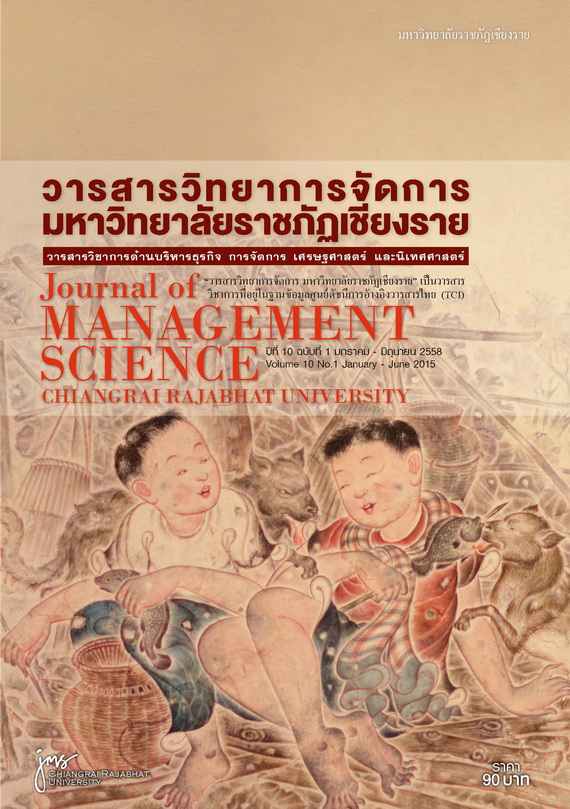The Strategic Development in Human Resource Management of The State Railway of Thailand
Main Article Content
Abstract
This research on Strategic Development in Human Resource Management of The State Railway of Thailand is conducted with 3 objectives; 1) To study the context of management and human resources development. 2) To study the internal and external factors that influence management and human resources development. 3) To study the management and human resources development strategies of the State Railway of Thailand in order to use the knowledge gained for human resources management in the future. The research involves Multi-Method of qualitative and quantitative approaches having the managements, employees and experts from the State Railway of Thailand as sources of information. Upon completion of the research, we could identify 5 strategies for the Human Resources Management which are 1) Strategy of building super leadership, compositionof plan and strategy that give importance to leadership development in super leaders to trigger the organization transformtowards IT and ICT ages and the construction of Change Leader for a good management. 2) Strategy of Organizational culture change which are; empowering decision-making to lower managements, change the attitude, values and practices to international standard, improvement of internal communications as well as the support of integrity, morality, respect of people and the plan to change to Business Unit. 3) Strategy of capability building for new comers conducted by identifying a scheme of recruitment effectiveness and replacement as well as building individual capability including the skill of problem-solving, decision-making, communications, leadership readiness, team-working and knowledge-transferring from one generation to another by mentoring system as well as field trips to other Best-practiced State Enterprises or Private Companies that provide Mass transportation as well as higher education scholarships. 4) Strategy of career path development providing a manual of career development in railway field, job replacement and bringing in the ERP system for Human Resource Management. 5) Strategy of developing Human Resources into Human Capital by encouraging learnings to bring out the best of employees' potentiality.
Article Details
Views and opinions expressed in the journal do not necessarily reflect those of the editors.
References
David, F.R. (2009). Strategic management: Concept and cases. (12th ed.). Upper Saddle River, NJ:Pearson Education. Hitt,M.A., Hoskisson, R.E. & Ireland, R.D. (2007).Management of strategy: Concept and cases. Mason, OH: ThomsonSouth-Western.
Katsioloudes, M.I. (2006). Strategic management: Global culture perspectives for profit and non-profit organizations. Burlington, MA: Elasevier. Noe, R.A., Hollenbeck, J.R., Gerhart, B., & Wright, P.M. (2006). Human resource management: Gaining a competitive advantage. (5th ed.). New York:McGraw-Hill. Paauwe,J. (2008).HRM and performance: Achieving long-term viability. New York: Oxford UniversityPress. Schuler, R.S. and MacMillan, I. (1984) Gaining competitive advantage through human resourcepractices. Human Resource Management. 23, 241-256. Summer, Mary. (2004). Enterprise Resource Planning. Southern Illinois University, EdwardsvillePrentice Hall. Sveiby, K.E. (1997). The New Organizational Wealth: Managing and Measuring Knowledge Based Assets.SanFrancisco: Barret-Koehler. Inc. Swart, J., Mann, C., Brown, S., & Price, A. (2005). Human resource development: Strategy and tactics. Oxford, UK: Elsevier. Ulrich, Dave. (1991) Anew mandate for human resources. Harvard Business Review.
(January-February,1998), 124-134. Wright,P.M., and McMahan, G.C. (1992). Theoreticalperspectives for strategichuman resource management. Journal of Management, 18(2), 295.


